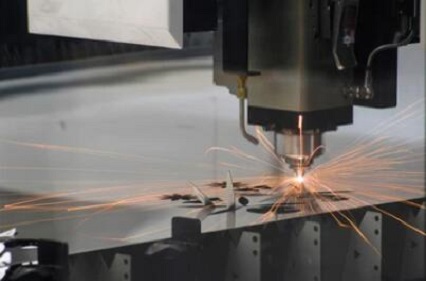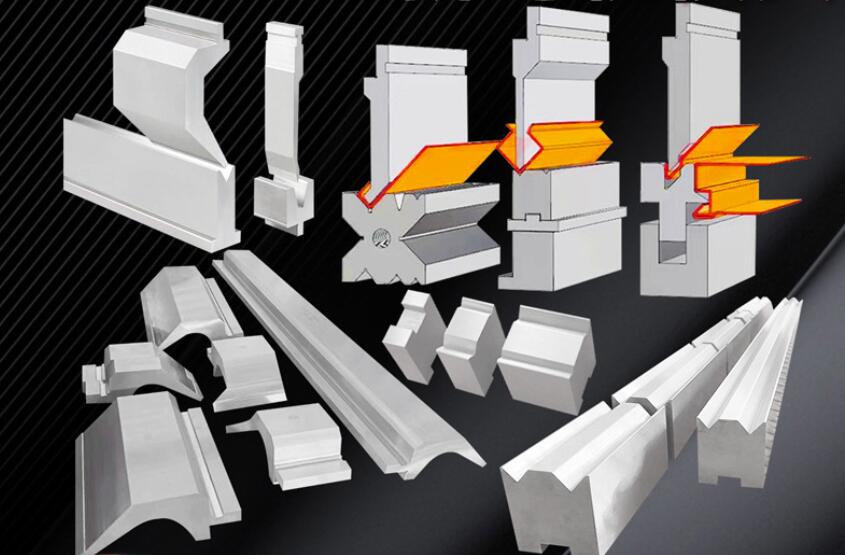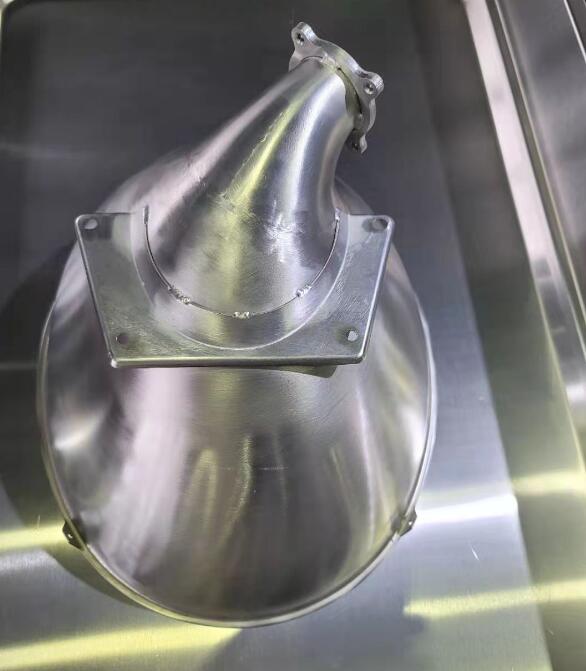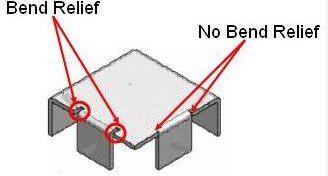Welcome to our in-depth exploration of sheet metal fabrication. One may wonder, “what is sheet metal fabrication?” At its core, it’s a collection of processes that manipulate sheet metal into different shapes and structures. By mastering these techniques, businesses like our very own Chengli Hardware provide clients with top-tier, custom metal fabrication services that cater to unique needs and standards.
Throughout this blog, we’ll delve into the various types of fabrication, the metal fabrication process, and how sheet metal is used in various industries. You’ll also gain insights into custom sheet metal fabrication, a unique value proposition from providers like us. Stay tuned to learn more about this crucial process.

What is Sheet Metal Fabrication
Sheet metal fabrication is a complex process involving a series of operations to shape sheet metal into the desired parts and assemblies. It entails the transformation of a raw sheet of metal into a functioning product used in various industries.
Through sheet metal fabrication, a flat and thin sheet metal can be converted into a three-dimensional part. This process is extensively utilized in the production of countless components, such as car bodies, airplane wings, building materials, and many more.
Moreover, businesses and individuals can also avail custom sheet metal fabrication. This service enables the creation of parts and components as per specific requirements, increasing efficiency and effectiveness for the end-users. Providers like Chengli Hardware specialize in such customized manufacturing solutions to meet a diverse array of client needs.
Advantages of Sheet Metal Manufacturing
Sheet metal manufacturing, inclusive of sheet metal fabrication, presents an array of advantages, making it a sought-after process in various industries.
Versatility: Sheet metal can be shaped and sized into a wide range of parts and components, making it an ideal solution for a broad spectrum of applications, from automotive to aerospace, construction, and electronics.
Cost-Effective: Given its efficiency and the ability to produce large quantities, sheet metal manufacturing is a cost-effective method for both prototyping and mass production.
Durability and Strength: Sheet metal products, whether made from aluminum, stainless steel, or copper, are inherently strong, durable, and capable of withstanding harsh conditions.
Efficient Production: Advanced techniques like laser cutting, waterjet cutting, and punching increase precision and reduce waste, making the process more efficient.
Aesthetics: With various surface finish options, sheet metal products can be aesthetically pleasing, aligning with the design and appearance requirements of different industries.
Working Process of Sheet Metal Fabrication
This process begins with a sheet metal prototype or blueprint, which details the final product’s specifications. Using this prototype, sheet metal fabricators manipulate the metal using several techniques, including cutting, bending, forming, and assembling, to achieve the desired shape. This transformation process can be achieved in local sheet metal fabrication shops, or at large scale sheet metal factories.
Step1:Cutting

Various cutting techniques are used based on the complexity and requirements of the job, with the most common ones detailed below:
- Mechanical Cutting: This involves using cutting tools or machines to slice through the sheet metal, creating unique shapes and sizes. It is often used for custom sheet metal fabrication as it allows for the creation of complex designs with high precision.
- Laser Cutting: Leveraging high-power lasers, this technique ensures precise cutting of sheet metal parts. Laser cutting is beneficial for intricate designs requiring high accuracy, offering a smooth finish without needing additional processing.
- Punching: This is a fabrication process where a punch and die are used to create holes in the sheet metal. Sheet metal prototypes often require punching to produce parts with multiple cut-outs or holes.
- Shearing: Shearing is employed to cut straight lines on flat sheet metal. It’s used in the initial stages of the fabrication process to cut large sheets of metal into smaller sizes for further processing.
- Waterjet Cutting: This process uses a high-pressure stream of water, often mixed with an abrasive substance, to cut the sheet metal. Waterjet cutting is ideal for materials that could be damaged by heat-based cutting methods.
Step 2: Forming

Forming is the next crucial step in the sheet metal fabrication process following cutting. This stage involves reshaping the sheet metal without removing any material. Here are the key forming techniques commonly employed:
- Bending: Bending is a common sheet metal forming method, often carried out on a press brake machine. The sheet metal is placed over a die block, and a punch applies force to create a bend at the desired angle. This process is ideal for creating sheet metal prototypes or parts with angular or curved geometries.
- Roll Forming: This method involves passing the sheet metal through sets of rolls mounted on consecutive stands. Each set performs incremental parts of the bend until the desired cross-section profile is achieved. Roll forming is widely used for producing components with a constant profile that extends the entire length, such as channels or angles.
- Coining: Coining is a precision metal forming process used in sheet metal fabrication to create fine details and close tolerances. Under a high amount of force, the sheet metal is plastically deformed without any scraping or cutting. This process is useful for creating parts with specific shapes or surface features, often used in decorative and electrical applications.
Step 3:Assembly

At this point, the cut and formed parts are joined together to create the final product. There are several techniques used in the assembly process, such as:
- Welding: There are several types of welding used in sheet metal fabrication. MIG (Metal Inert Gas) welding, TIG (Tungsten Inert Gas) welding, and laser welding are the most common. These methods use high heat to melt the base metals, allowing them to join together. In contrast, spot welding fuses two pieces of sheet metal together using a combination of heat, pressure, and electricity.
- Riveting: Rivets provide a strong, permanent joint for two or more pieces of sheet metal. They are used when welding isn’t suitable or for a decorative effect.
- Hardware Fasteners: Fasteners, such as screws, nuts, and bolts, can also be used to assemble sheet metal parts. This method is ideal when the assembly needs to be easily disassembled or adjusted.
Materials Used in Sheet Metal Fabrication

Sheet metal fabrication is versatile due to the range of materials that can be used. Each material has specific characteristics that make it suitable for different applications. Here’s a list of commonly used materials:
Aluminum: Aluminum is lightweight, corrosion-resistant, and has high thermal conductivity, making it ideal for heat sinks, aircraft components, and automotive parts.
Stainless Steel: Known for its corrosion resistance and strength, stainless steel is often used in kitchen appliances, medical equipment, and construction.
Hot-rolled steel: This type of steel is robust and affordable, making it suitable for structural applications.
Cold-rolled steel: Cold-rolled steel provides a smooth finish and is used for aesthetic purposes like furniture and appliances.
Galvanized sheet metal: This material is steel coated with a layer of zinc for added corrosion resistance. It’s commonly used in HVAC systems and automotive bodies.
Copper: With excellent electrical conductivity, copper is widely used in electrical components and decorative elements.
Brass: Brass offers excellent machinability and corrosion resistance, making it suitable for decorative items, musical instruments, and hardware components.
Magnesium: This lightweight metal is perfect for applications where weight is a concern, such as automotive and aerospace industries.
Lead: Due to its high density and malleability, lead is used in radiation shielding and soundproofing.
Surface Finish of Sheet Metal Fabrication

Metal Plating: In this process, a thin layer of metal is deposited on the surface of the workpiece to enhance its corrosion resistance, wear resistance, electrical conductivity, or appearance. Common plating metals include gold, silver, nickel, and zinc.
Polishing: Polishing results in a shiny, smooth surface by removing a small layer of the material. It’s typically used to improve appearance or to prepare for another finishing process.
Painting: Painting is an economical way to protect the metal from corrosion while adding color and branding elements.
Powder Coating: A process where a dry powder is applied electrostatically and then cured under heat. It creates a hard finish that is tougher than conventional paint, improving durability and resistance to chipping or cracking.
Laser Marking, Etching and Engraving: These processes are used to add labels, logos, barcodes, or decorative elements to the metal surface.
Anodizing: Mainly used for aluminum, anodizing increases resistance to corrosion and wear, and provides better adhesion for paint primers and glues.
Applications of Sheet Metal Fabrication
Sheet metal fabrication finds extensive applications across various industries due to its versatility, cost-effectiveness, and the vast array of materials it can work with. Here’s how some industries utilize this process:
Automotive Industry
Automotive manufacturers use sheet metal fabrication to produce different components of a vehicle, like the body, chassis, and other intricate parts. Automotive metal stamping is an essential technique here.
Aerospace Industry
In the aerospace sector, sheet metal parts are crucial for constructing airframes, engines, and other complex components. Materials like aluminum and titanium are often used due to their strength-to-weight ratio.
Construction Industry
Sheet metal is used in the construction of buildings for roofing, HVAC systems, and architectural elements. It’s appreciated for its durability and ease of maintenance.
Electronics Industry
Sheet metal is used in the electronics sector to manufacture enclosures, heat sinks, and front panels. It offers effective electromagnetic shielding and excellent heat dissipation.
Appliances and Furniture
From kitchen appliances like stoves and refrigerators to office furniture, sheet metal fabrication contributes significantly. It allows for the mass production of durable and aesthetically pleasing products.
Design Tips for Sheet Metal Fabrication

Effective sheet metal fabrication design is a meticulous process requiring comprehensive understanding of certain key factors. Here are some practical guidelines for each:
Wall Thickness
Choose an appropriate wall thickness based on the material being used. For instance, aluminum can be thinner than stainless steel due to its lighter weight. A uniform thickness across your design will ensure the structural integrity of the final product.
Holes and Slot Orientation
Position your holes at least two material thicknesses from any part edge and three material thicknesses from another hole. For slots, make them at least as long as their width.
Bend Allowance and Deduction
Bends impact final dimensions. For precise calculations, subtract the bend deduction from the total length of your flat part to obtain your part’s final length.
Bend Radii
A good rule of thumb is to make the inside bend radius at least equal to the material thickness. For instance, if you’re working with 1mm thick sheet metal, use a 1mm bend radius to avoid cracking or deformation.
K Factor
K factor, a ratio that helps determine the bend allowance, is generally between 0.3 to 0.5 for most metals. Use it to calculate your bend allowance as: BA = π/180 (Bend Angle) (T/2 + K*MT), where T is material thickness and MT is Mean thickness.
Conclusion
In summary, sheet metal fabrication is an essential process that transforms sheet metal into durable, versatile, and cost-effective components used in various industries.To learn more about sheet metal fabrication and how it can benefit your next project, check out our extensive resources at Wipunch. We are committed to providing the highest quality products and services in the industry. Start a conversation with us today about your fabrication needs.
Connect with us now and let’s build something extraordinary together!
Frequently Asked Questions (FAQs)
What are the three types of metal fabrication?
The three primary processes involved in metal fabrication are cutting, forming, and assembling.
What is the difference between sheet metal and fabrication?
Sheet metal is the material used, while fabrication is the process of shaping this material into the desired part. Fabrication can involve sheet metal, but it also includes other materials.
How thick is sheet metal fabrication?
It typically ranges from 0.5mm to 6mm.
